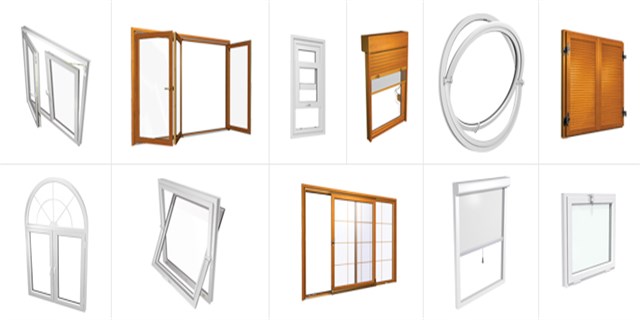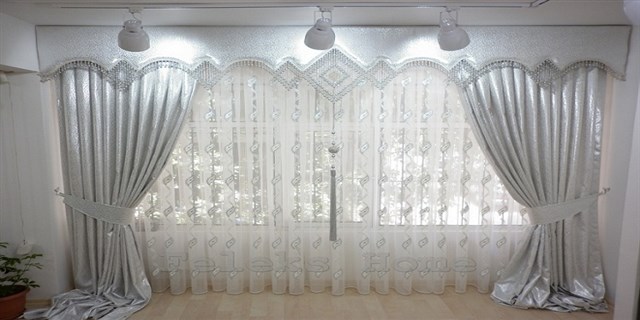Window treatments are an important part of the decorative appeal of most rooms in the home. The options range from extravagant curtains and valances to plain blinds or shutters.
These are all traditional ways of decorating windows, but with a little creativity, you can break loose from convention and introduce your own innovative ideas.
Looking At Windows
Before choosing any window treatment, look Take into account the practical functions that at the style and shape of a particular treatment will serve, such as increasing privacy, window and consider all decorative options, keeping out the cold or heat, or blocking light.
Common Window Types
Window types and sizes vary considerably. Adapt your window treatments accordingly.
• Sash: These are often tall and narrow. “Widen” them with curtains and a half-drawn blind.
• French: Draw curtains back from the frame to ensure easy opening and closing.
• Picture: These are simple in design. Choose from all types of window treatment.
• Bay: Consider carefully the hanging system required for these multi-faceted windows.
• Casement: These vary greatly in size and design. Assess each one individually.
Setting a Style
Choosing window treatments can give you a wonderful opportunity to release your own artistic flair. Whether you drape lavish swaths of expensive fabric or adopt a more minimalist approach, the decorative style of a room can often be, set by the window treatment alone.
Considering Options
Before choosing fabrics and styles of window treatments, think about these purely practical considerations.
• Function: Choose simple, inexpensive hanging systems whenever you can, especially if your window treatments are purely decorative. You may need to invest in more costly- hanging systems if you decide to hang curtains made of the heavyweight material for warmth, for example.
• Budget: Very full drapes usually result, at great expense, so make sure that you work out what your budgetary restrictions are before you make choices.
• Theme: If you decide to try to follow a regional or period theme, research appropriate materials, designs, and colors in order to create a complete, authentic look.
Keeping Fabrics Plain
• Color scheming simply: Use plain materials to make color scheming easier. Window treatments will thus play a complementary decorative role.
Dressing up plain fabric: Although a fabric may be plain in color, drape it effectively with an unusual tieback. Use windowsills as display areas for interesting collections of objects.
Making a Statement: Drawing attention If you want a window treatment to be a focal point, choose bold or contrasting colors and patterns to draw the eye.
Enhancing embellishments: Emphasize a flouncy window dressing by offsetting it against understated walls. Paint walls off-white or an extremely pale, complementary color.
Treating a Window in Different Ways
• Tied back from a closed position. Use a shaped valance to disguise the squareness of a window.
• Hang a blind inside a window recess to emphasize the shape of the window. A patterned blind will draw attention to clear lines and square angles and help to make the window a feature.
Setting the Scene
• Having fun: Choose an appropriate fabric and use it for curtains, bedcovers, and cushions to produce a sense of fun in a child’s room.
• Aiding relaxation: Indulge yourself in swaths of curtain material in restful colors for a den that is used for calm recreation and relaxation.
• Improving light: Use pale-colored treatments at windows that receive little or no direct sunlight. These will encourage the greatest amount of light reflected into the room.
• Increasing privacy: In private areas of the home, such as a bedroom, cover the windows completely to help to create a secure, restful mood.
Selecting Materials
Selecting the right materials when dressing windows is as important as in any other decorating job. All tasks at this stage of your project will be easiest if you use the equipment and materials that are specifically designed for the job.
Basic Window-Dressing Equipment
You may need to amalgamate several collections of tools and other items for dressing windows.
• Toolkits: Include a basic sewing kit for making and altering furnishings, as well as general household tools for attaching treatments in place.
• Hanging equipment: Choose a simple, relatively inexpensive hanging system – a track and gliders, or a lightweight rod for light to medium weight curtains. Use a stronger, more complicated systems for hanging heavyweight fabrics.
Choosing Fabrics For Window Treatments
Most fabrics can be used for curtains or blinds. Make your choices based on practical as well as aesthetic factors.
• Color, pattern, and fiber: Let colors and patterns, or the weave of fabric such as damask, guide your choice, but bear in mind practical factors also.
• Weight: Choose heavy fabric such as brocade for sumptuous drapes. Sheer silk or fine fabrics such as lace, cotton, or calico will be more light and airy.
• Function: If using thin curtain fabric, consider lining to block light or interlining for warmth.






